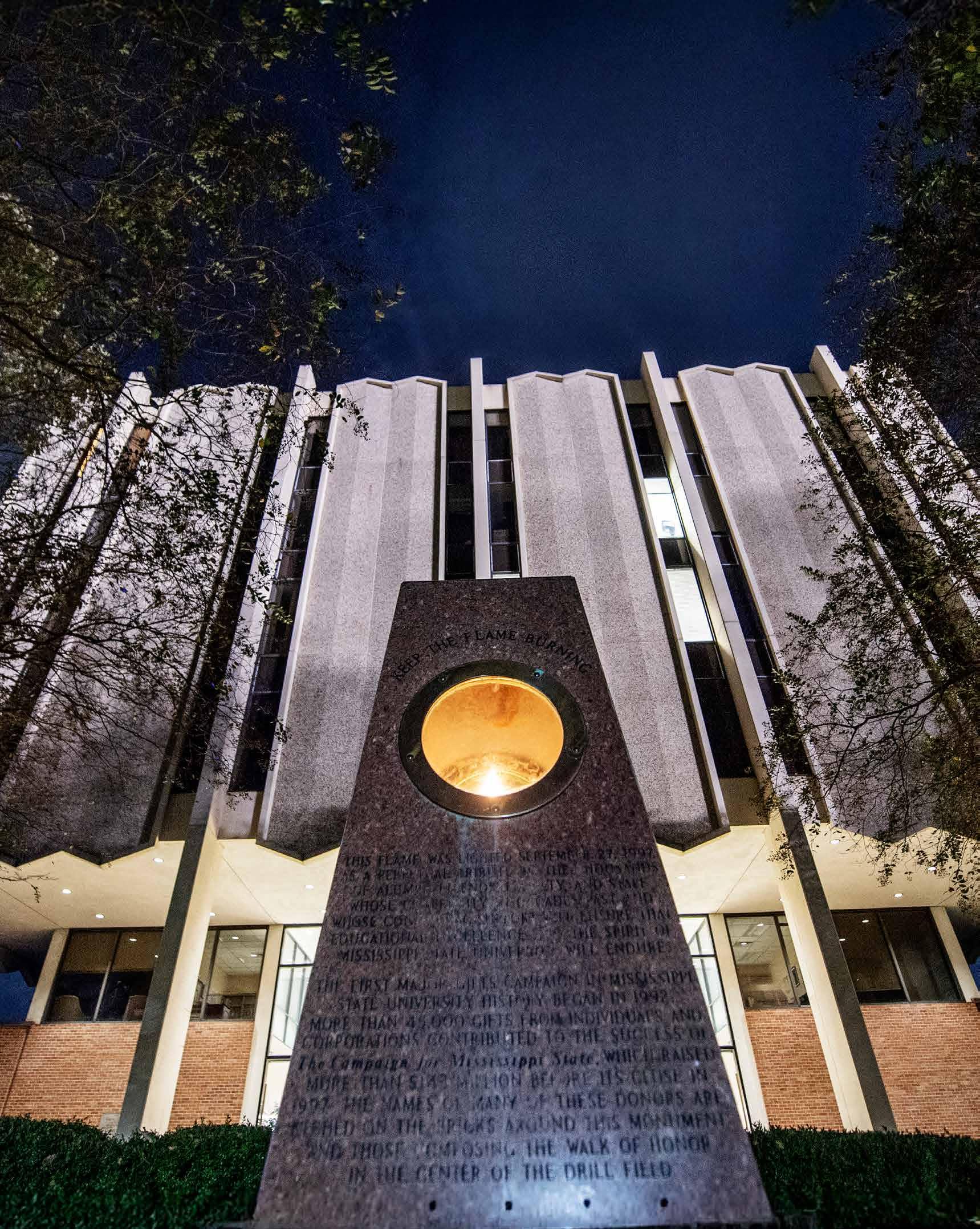
11 minute read
60 YEARS IN THE SPOTLIGHT 60 YEARS IN THE SPOTLIGHT
Theatre MSU’s diamond anniversary of theatrical innovation
By Portia Agyapong
From humble beginnings to a cornerstone of Mississippi State University’s cultural landscape, Theatre MSU is a perfect example for Collier’s quote.
Founded in 1963 within the thenDepartment of Speech, Theatre MSU has flourished through decades of dedication, hard work and perseverance. As the program marks its diamond anniversary, it celebrates not only its history but the people who have contributed to its success.
Tonya Hays, assistant professor and coordinator for the theater program, reflected on the obstacles the program faced in its early days. “The arts weren’t a priority back then,” Hays said. “Theatre MSU didn’t even have its own dedicated space. Dominic J. Cunetto, who was hired to start the program, had to rely on volunteers and student effort to get things off the ground. He essentially ran a oneman show.”
Despite these initial challenges, the program continued to grow, thanks to Cunetto’s tenacity and the hard work of those involved.
After decades of progress, one of the program’s proudest achievements has been securing its home in McComas Hall. “Our theater is a beautiful space with fantastic acoustics,” Hays said. “We’re fortunate to have this facility, which not only benefits us but also attracts groups like dance companies and theater organizations that use it during the summer.”
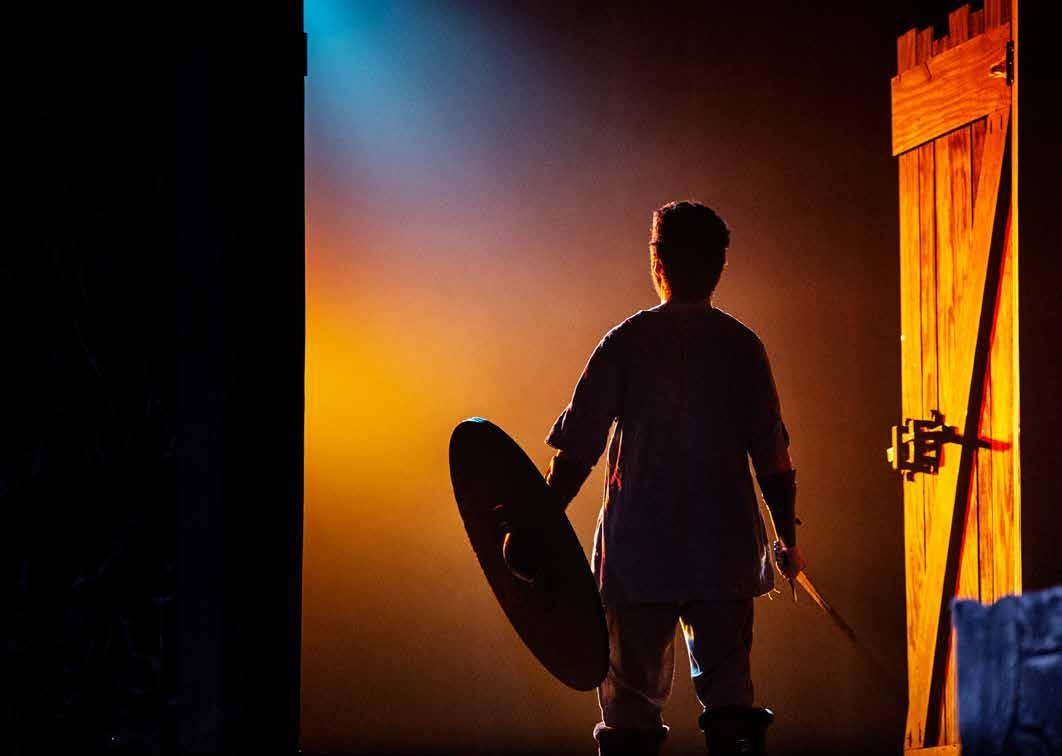


Inclusivity also has been a hallmark of the program, with students from all majors welcome to participate. Hays highlighted a recent production in which the lead actor was a pre-med major, showcasing how Theatre MSU fosters talent from across the university.
In addition to producing diverse performances, the program has made partnerships and community outreach a priority. “We’ve collaborated with many departments and community organizations to raise awareness of social issues,” Hays said. Notable partnerships include collaborations with the Starkville Police Department, MSU’s psychology department, and the MSU Northern Gulf Institute, among others. One recent highlight was Theatre MSU’s involvement in a reading of “Enough,” a series of awardwinning plays written by high school students addressing gun violence.
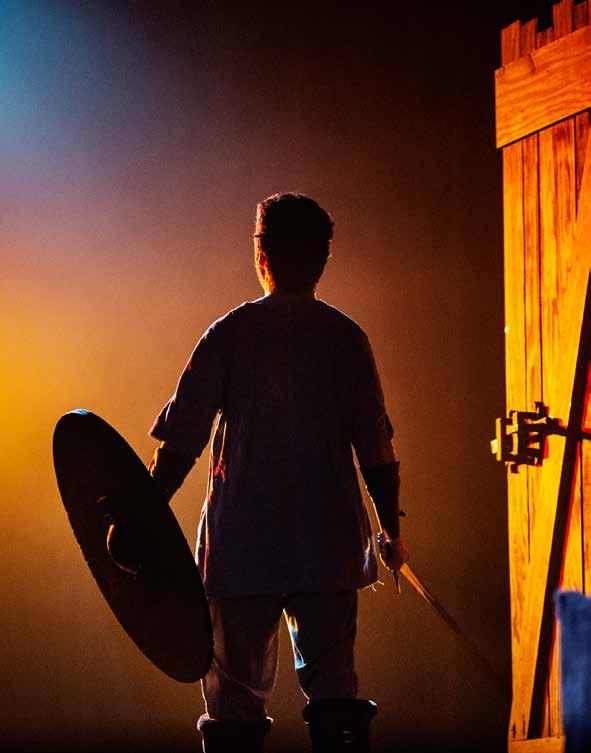
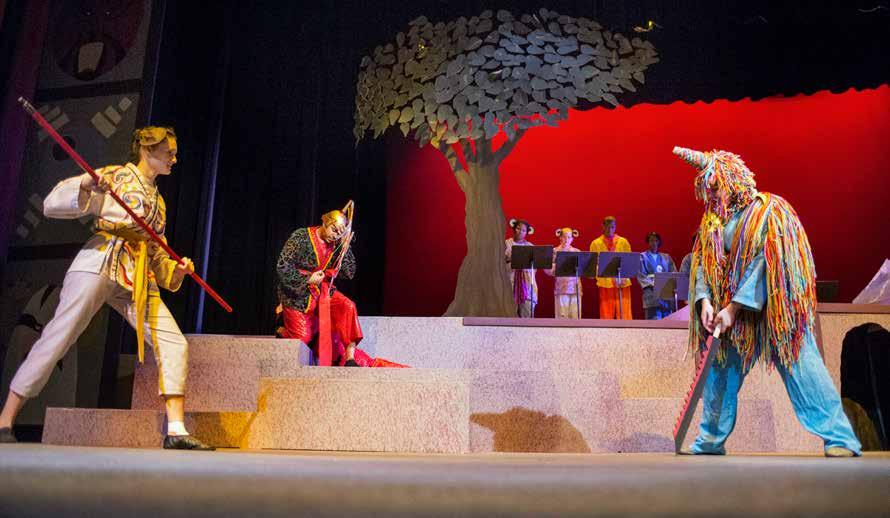
In honor of its 60th anniversary, Theatre MSU added several special events to its lineup. A collaboration with MSU’s music department led to a full-scale production of “Pippin,” which Hays called “a huge milestone for us.” The musical was selected because “Pippin” was the first musical debuted at MSU decades ago when the McComas Hall theater was fully furnished.
The celebration also included a reunion that brought back original cast members of “Pippin” to meet with the current cast and pay tribute to Dominic Cunetto’s legacy.
This milestone anniversary underscores the vital role the arts play at MSU and in the broader community. As Hays looks to the future, she said, “We want to see more musicals, expand our outreach and give students more opportunities to create their own work. Our goal is to stay integral to the life of the university and provide a home for students who want to express themselves.”
Theatre MSU has succeeded in building a community where everyone feels they belong. “Students often tell me that the theater program has become like a second family for them,” Hays said. “It helps them stay motivated, both in their studies and in life.”
Theatre MSU is working hard to keep the pace with the evolving world of theater. “Technology is the biggest change,” Hays said. “No one is painting backdrops anymore; they’re using digital projections. It’s crucial that we train students with the technology of the future, even though upgrading our production capabilities will be a challenge.”
Beyond the technical aspects, Hays emphasized the importance of nurturing creativity. “Everyone has some degree of creativity, but as we get older, we can lose touch with it because life gets so busy. The arts should remain a key part of addressing social issues like mental health and gun violence.”
As Theatre MSU celebrates its diamond anniversary, it continues to embody the resilience, creativity and dedication that have defined its six-decade journey. Through performances, partnerships and a commitment to the arts, the program remains an essential part of MSU’s cultural fabric. u



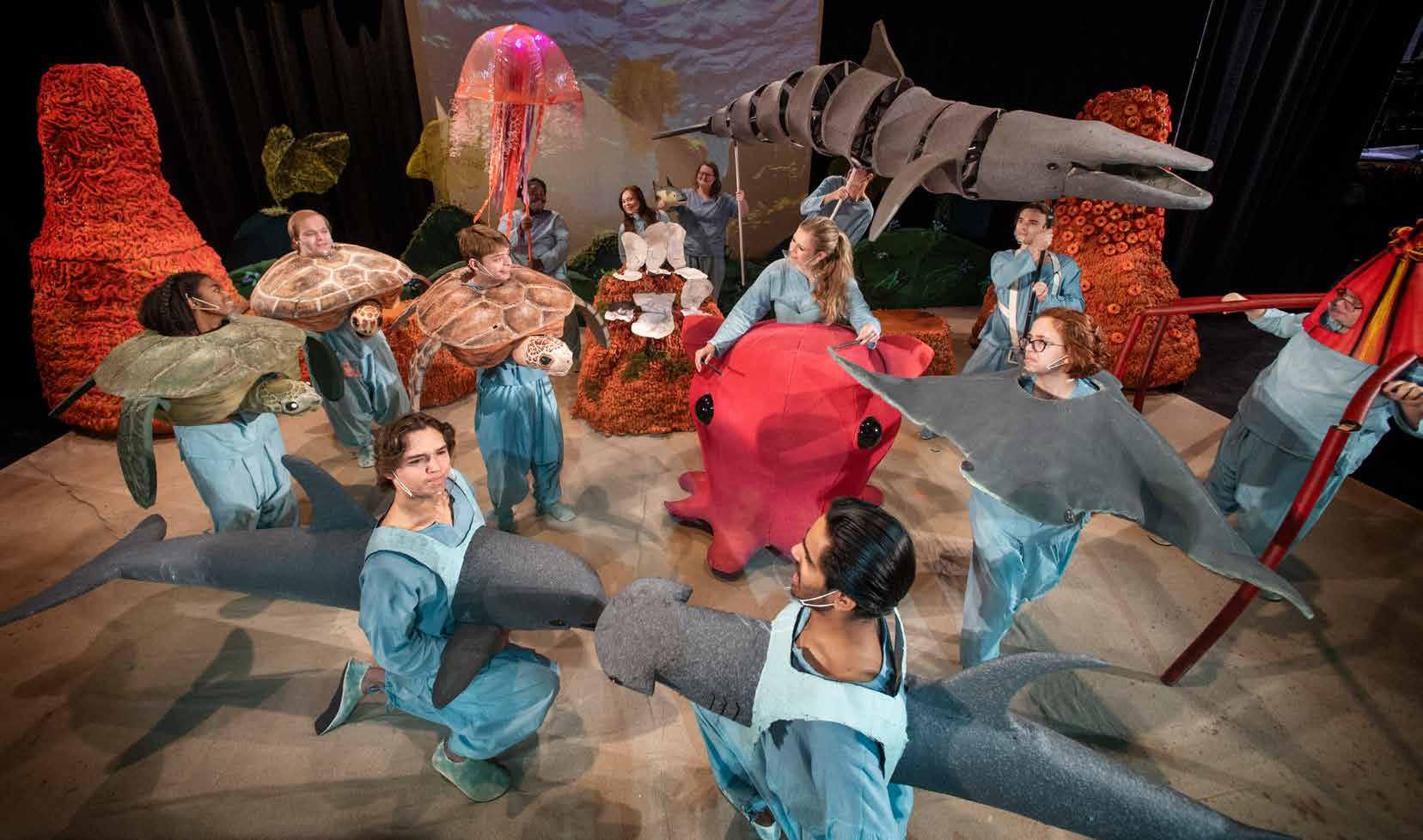


About Tonya Hays
Tonya Hays is an assistant professor of theater, where she teaches acting, directing and playwriting.

With a background rooted in theater education and an MFA from Texas Christian University, she is known for her impactful work as the founder and former director of the WINGS Performing Arts Program at the Lynn Meadows Discovery Center, which earned her national recognition, including a Tony Award nomination for her contributions to theater education.
Hays is passionate about using theater as a tool for social awareness and collaboration, having led numerous partnerships with other departments and organizations to address important issues through performance. At MSU, she continues to be a driving force in expanding the theater program, integrating innovative approaches to performance, and providing a space wherein all students feel welcome.
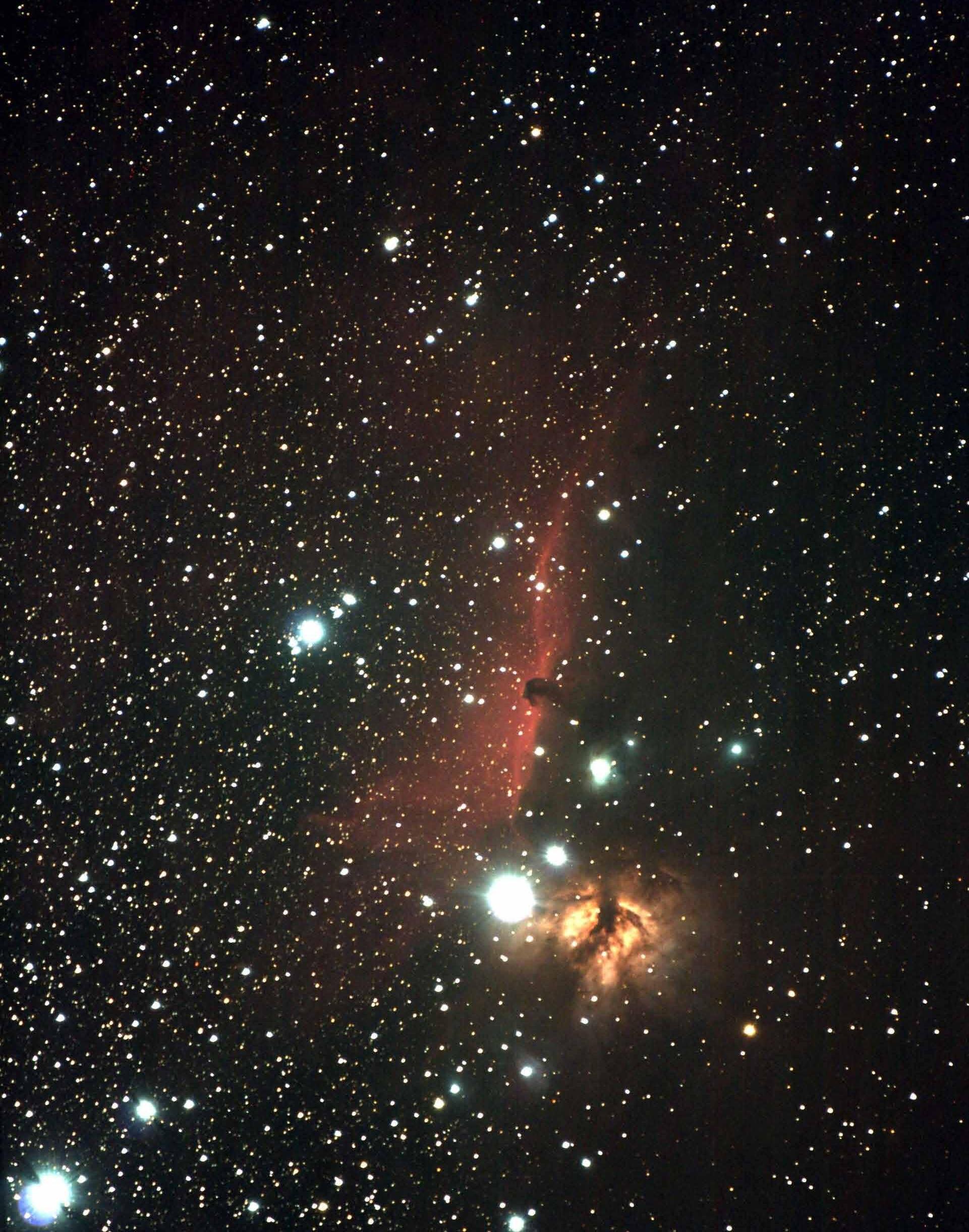
By Sarah Nicholas

ASTROBIOLOGY: Is there life out there?
“The two big questions in astrobiology are how and where did life start on Earth and is there life elsewhere in the universe?” said Jean-Francois Gout, an assistant professor of biology at Mississippi State University. He recently developed a class tackling life’s origins on Earth and the possibility of extraterrestrial life, topics that bridge biology and astronomy in a new field: astrobiology.
“No one knows the answer to these questions,” Gout tells his students on the first day of class. “We make educated guesses based on the mechanisms of life and our knowledge of the universe. I focus on how science increases our understanding—how do we know all life on Earth shares a common ancestor? How do we know that life on Earth might be at least 3.8 billion years old? How do we know what stars are made of and how do we measure distances in the universe? I hope that the students in this class develop an appreciation for the scientific method,” said Gout.
“One thing I really enjoy about teaching at MSU is the opportunity to teach new classes with special topics. Bridging multiple scientific disciplines is a great choice and is extremely valuable. For example, a deep understanding of biology at the molecular level requires some solid knowledge of chemistry, and going deeper would require knowledge of physics. So, I encourage my students to be curious about multiple scientific disciplines and they will certainly discover unexpected bridges.”
For Gout, bridging his love of biology with his love of the cosmos brings fulfillment to his career and joy to the classroom.
“That is a great way for me to bring my passions together. We can discuss hypotheses about how life started on Earth. I tell my students we will have a lot of difficult questions but not a lot of definitive answers.”
“The biggest breakthrough in astrobiology would be discovering life beyond Earth,” said Gout. “But we’re not there yet.”
Despite decades of robotic exploration on Mars, no signs of past or present life have surfaced. The search continues, but the odds of an imminent discovery are slim. “Mars has been scoured by robots for years, and still, we’ve come up empty-handed,” Gout explained.

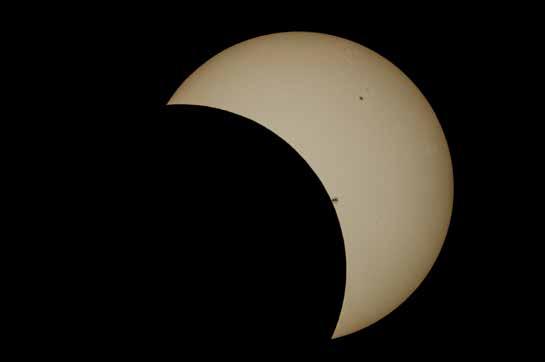
Beyond Mars, astrobiologists turn their gaze to the moons of the gas giants—enigmatic worlds with potential—but these distant realms remain notoriously difficult to explore.
Outside of Earth’s solar system exist what scientists call exoplanets, and with every generation, Gout said, scientists will learn more and more about the cosmos lightyears away.
“It would take a technological quantum leap for telescopes to be powerful enough to detect, without a doubt, life forms outside our solar system. We might find clues, but definitive answers are unlikely,” Gout said. “But we are lucky enough to have an exoplanets specialist at MSU–astrophysicist Angelle Tanner. Dr. Tanner gave a guest lecture on exoplanets in my class, and I’m sure that she will keep us posted on the latest discoveries on this side of things.”



“On the biology side of things, we keep learning more about the amazing discovery of life forms on Earth, especially at the microbial level. As an evolutionary biologist, I would love to see the discovery of life on another planet, but I doubt this will happen during my lifetime.”
Yet, Gout remains pragmatic. “If no signs of life are found anywhere in the solar system, it would still offer crucial clues, helping us refine our understanding of the unique conditions that sparked life on Earth.”
“Astrobiology may not answer these big questions anytime soon, but that’s what makes it exciting. There’s still a lot of work to be done before we can even hope to answer these questions,” Gout said.
ASTROPHOTOGRAPHY: Science meets art
“Outside the lab, astronomy and photography are major hobbies of mine,” said Gout. “Since childhood, I’ve been fascinated by the night sky. While human eyes are impressive, they struggle with dim objects, but attaching a camera to a telescope changes everything—you start to see so much more.”
Gout’s interest in astrophotography began with a mix of luck and mentorship. “As a kid, I had a friend who taught me black-and-white photographic techniques, back when we still used chemicals and red lights in the darkroom. My dad also had reflex cameras, and he’d let me take the last few pictures on his rolls of film,” Gout recalled.
His early attempts at astrophotography weren’t always successful. “At first, all I got were images of darkness or blurry stars. But I kept improving. My first decent astronomy picture came in 1997 with comet Hale-Bopp. It took a lot of patience, but I’ve always enjoyed a challenge.”
Today, Gout uses specialized cameras for scientific data, though he still takes “pretty pictures” occasionally. His first telescope, a gift from his grandfather, sparked his interest in science. “I remember sketching Jupiter’s moons as they shifted positions each night. Galileo did the same thing almost 400 years earlier, sparking a scientific revolution. I even used trigonometry to estimate the height of lunar craters—I was often off by at least 25%, but even rough estimates felt magical. The idea that we can derive knowledge from observing nature has always fascinated me, and this applies to all fields, including biology.”
Currently, Gout is tracking T Coronae Borealis (T CrB), a dim star visible only through telescopes but expected to brighten dramatically—up to 1,000 times—becoming visible to the naked eye for a few days.
This rare event, called a recurrent nova, could occur anytime between 2024 and 2028, though some predict it may happen this year.
“I set up my telescope every night in my yard to track this star and alert me to anything that happens with that star in the night. When most people are watching TV, I’m in the backyard by the telescope, enjoying the real stars in the sky.”
THE ECLIPSE: Merging totality and technology
Last spring, the U.S. witnessed a total solar eclipse, with the lucky few in the path of totality experiencing the rare event. During most of the eclipse, even when up to 99% of the sun is covered by the moon, special filters are required to safely observe and photograph the sun. However, during the brief moments of totality—when the moon completely blocks the sun—these filters can be removed, allowing a clear view of the sun’s delicate outer layers and the surrounding sky.
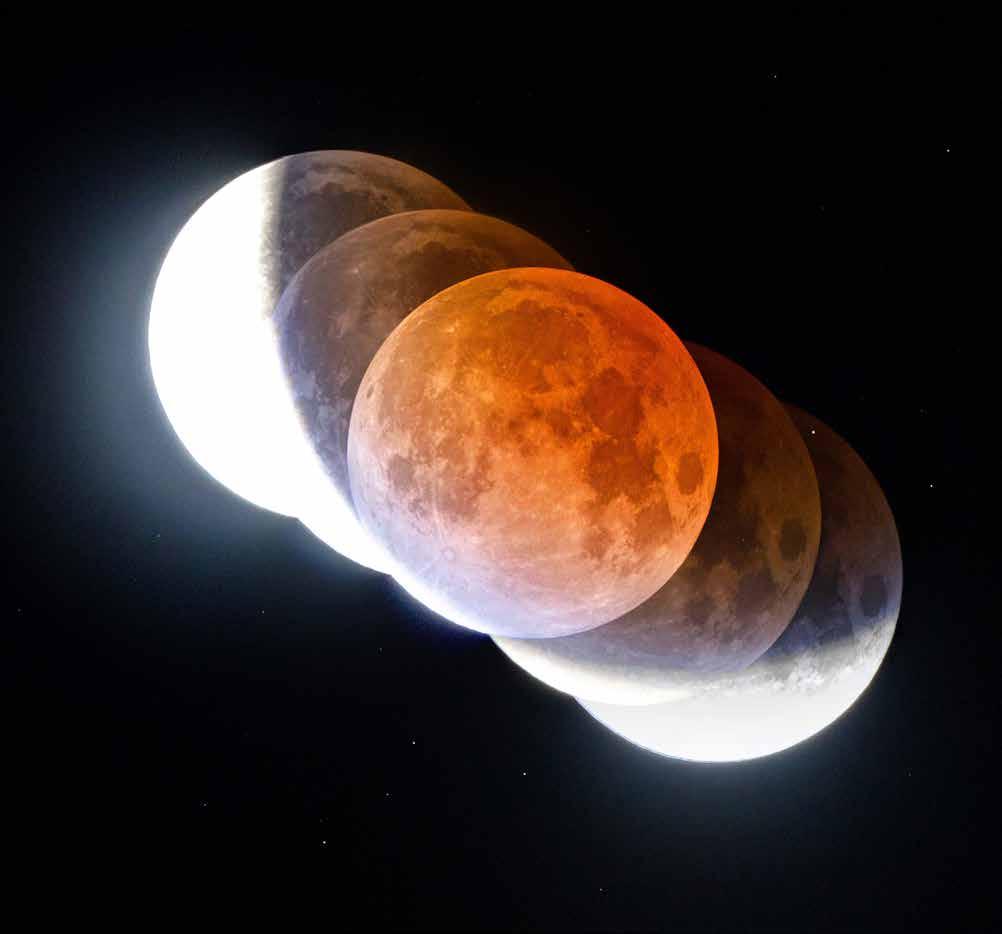
“Because totality is so short, I didn’t want to waste a second fiddling with gear when I should be observing,” said Gout. His solution? Custom technology.
“I used 3D printers from MSU’s Ideashop to create motorized supports for my telescope’s solar filters. I also wrote a program to automate the process, removing the filter at the start of totality and replacing it right before the end,” Gout explained. “With software controlling five cameras, each set to different settings, I didn’t have to touch anything. It allowed me to focus on the eclipse, not the equipment.”
Gout traveled to Arkansas to view totality. “It was my third total eclipse–plus a fourth, but that one was under cloudy skies–and it was just as magical as always.” u
“AT THE SHADOW’S EDGE”
This image taken by Gout of a lunar eclipse was selected as NASA’s Astronomy Picture of the Day on November 25, 2021. This composite of five images captures the progression of an almost total lunar eclipse over 1.5 hours. During this time, the telescope tracks the exact same region of the sky, so the moon’s motion becomes apparent, and it reveals the shadow projected by Earth into space.
“Lunar eclipses are some of my favorite events to observe. They also carry some historical importance because they were used in ancient Greece to estimate the distance to the moon about 2,200 years ago. I took this picture from my backyard in Starkville, and I keep a large print of it on the wall in my office,” said Gout.
